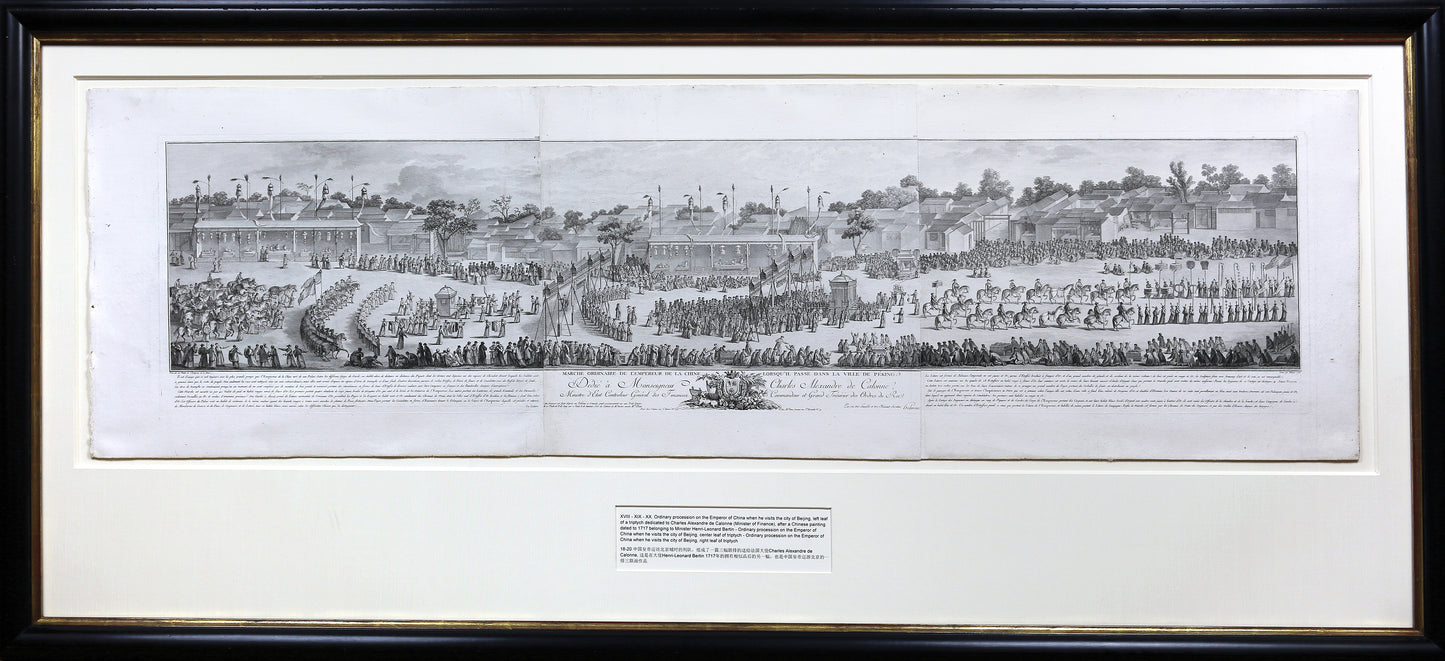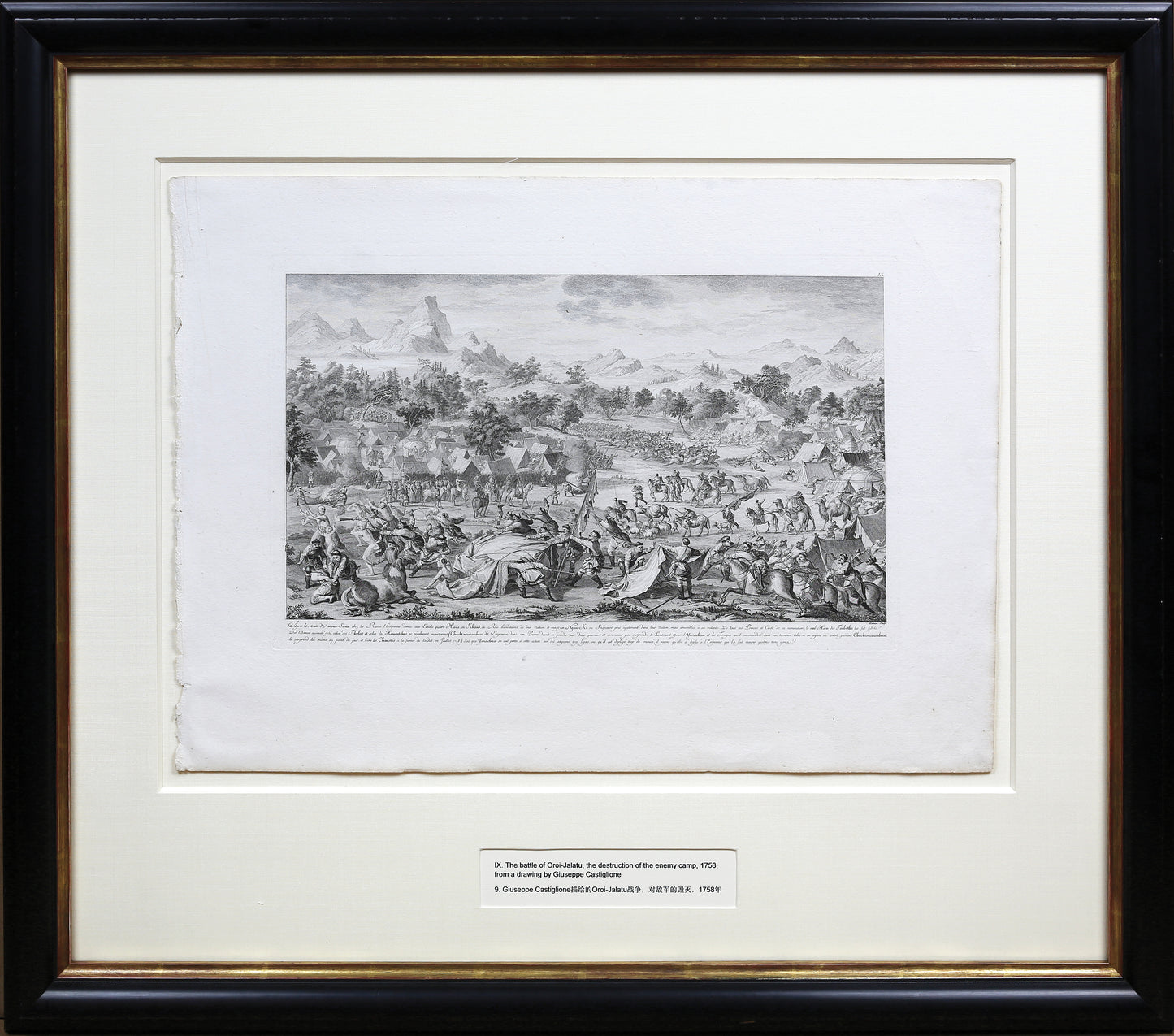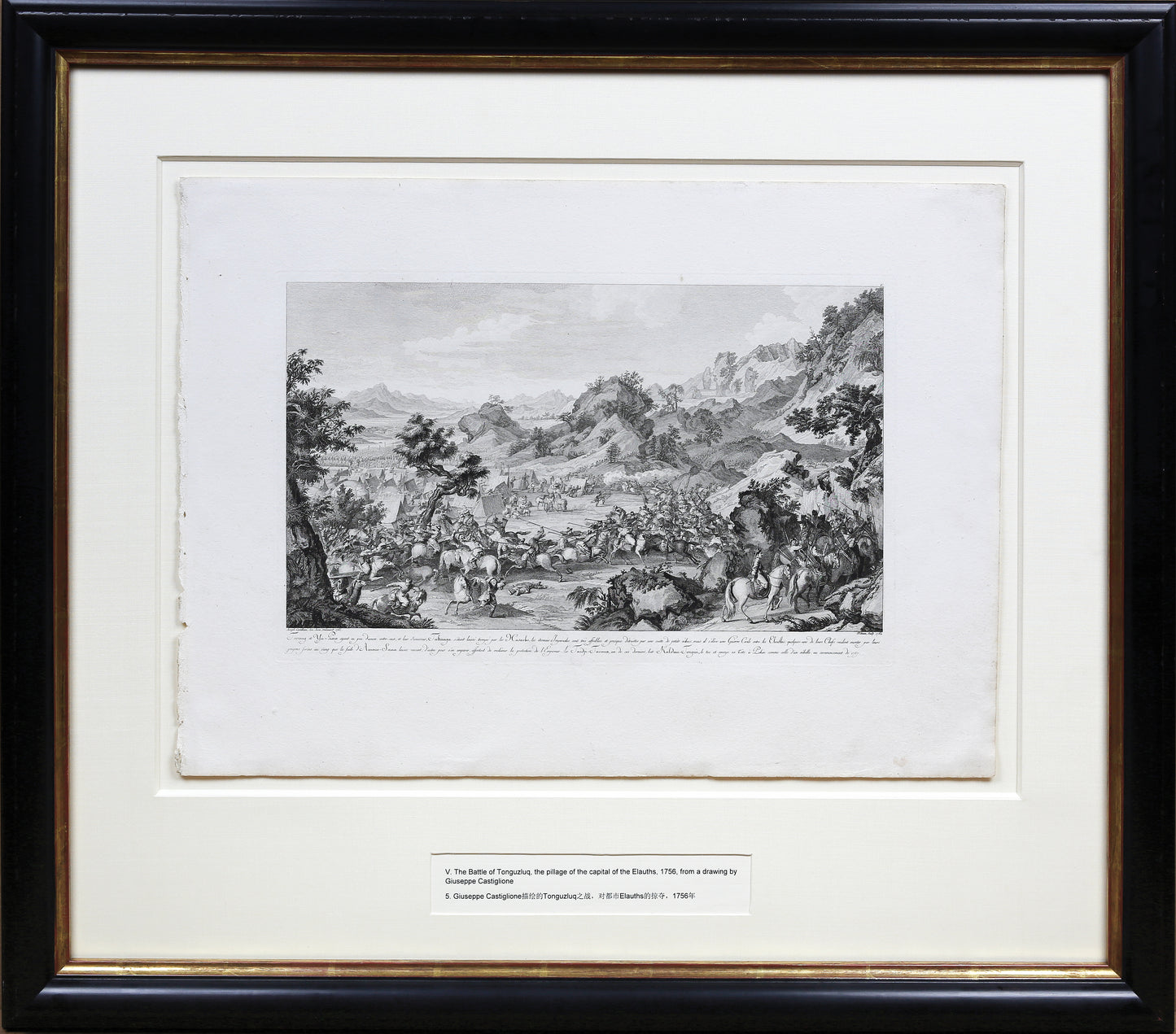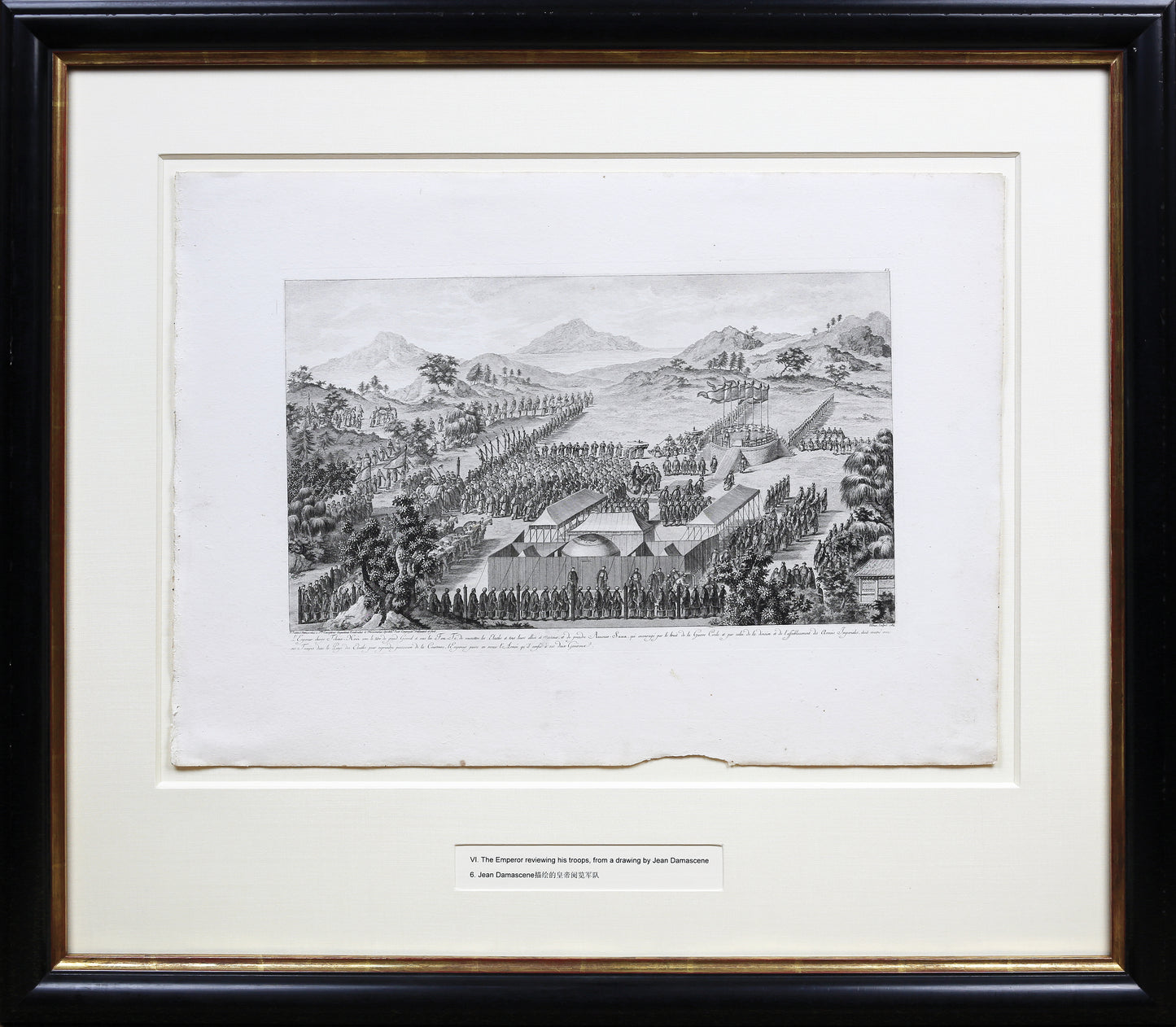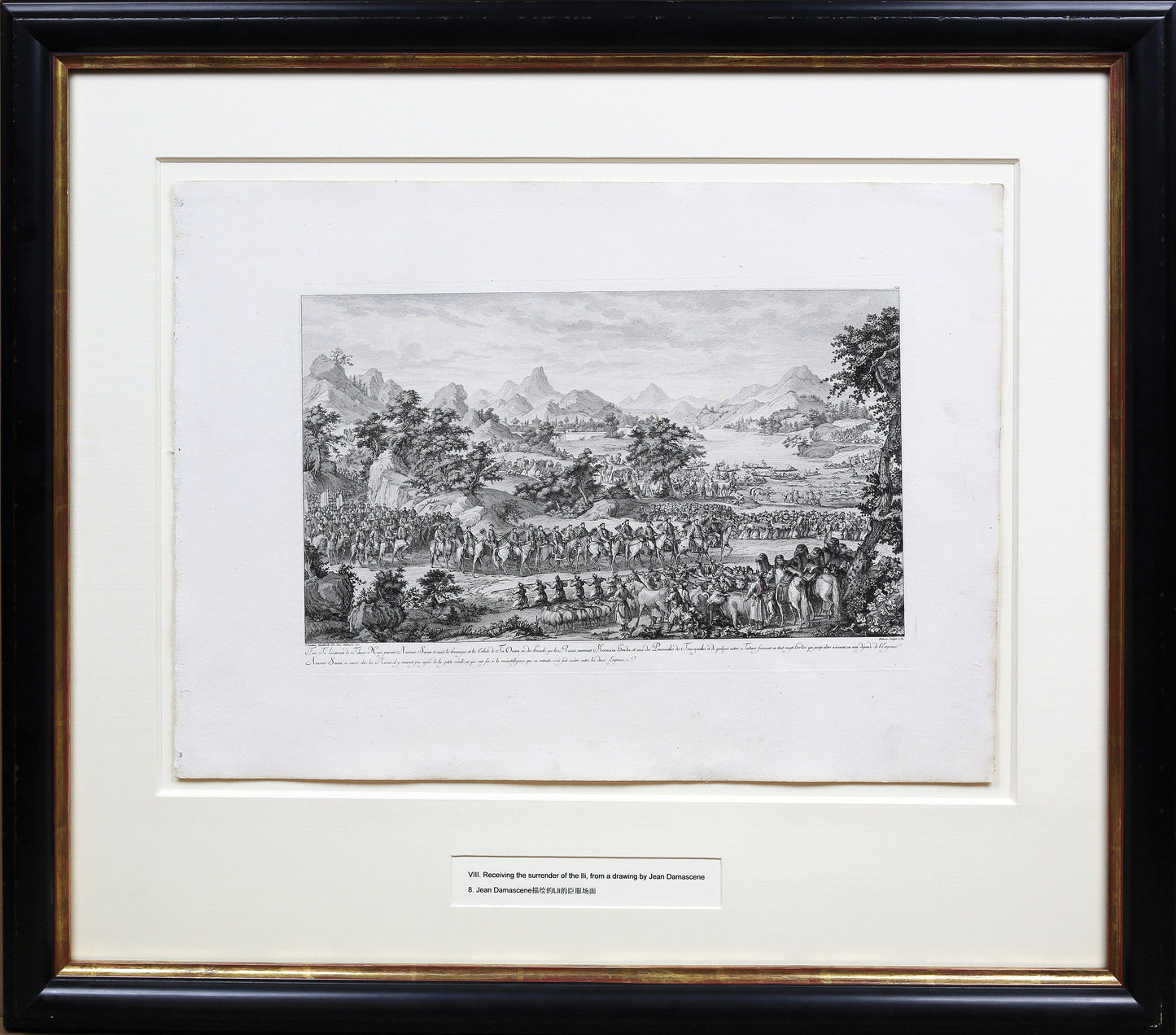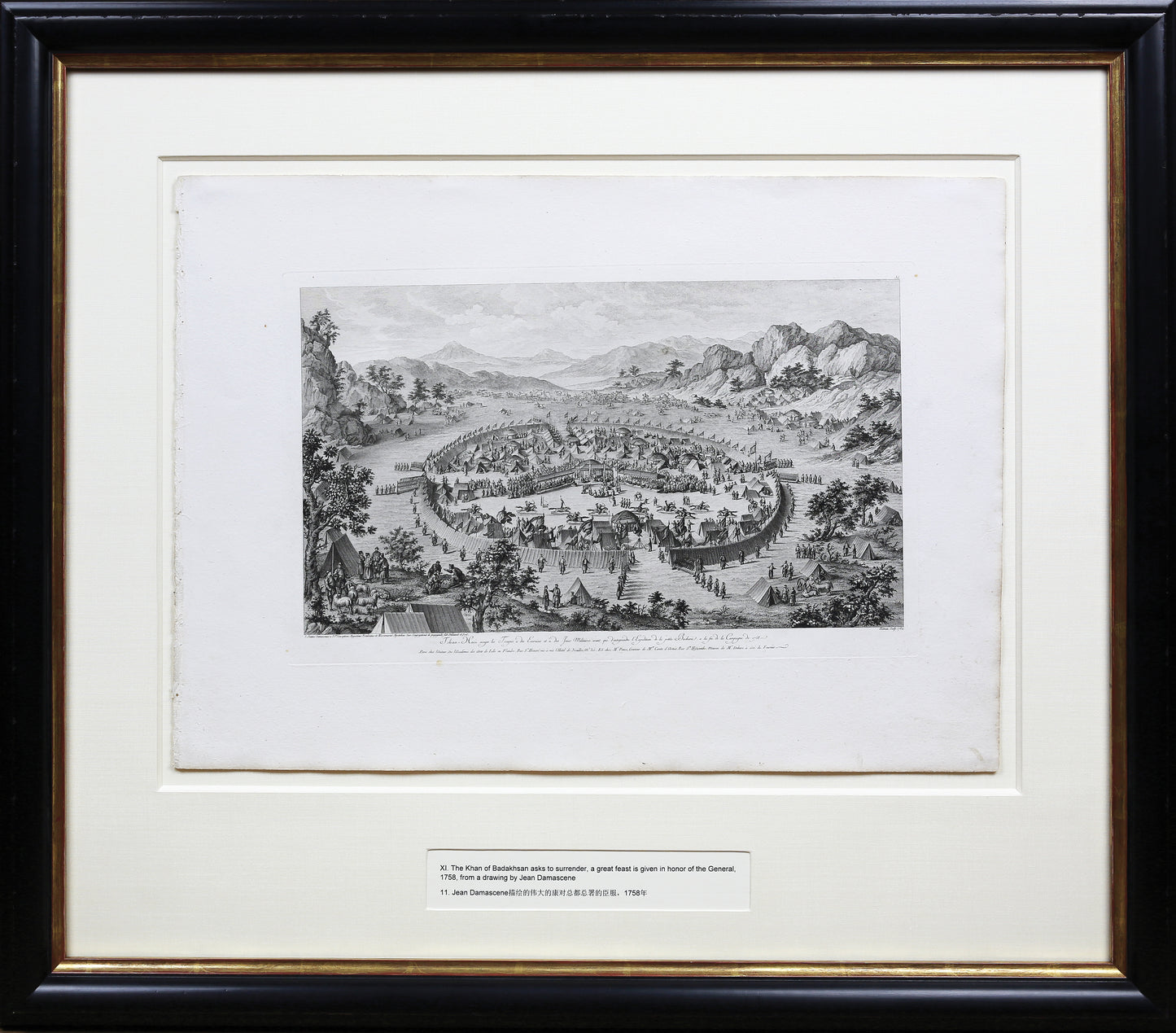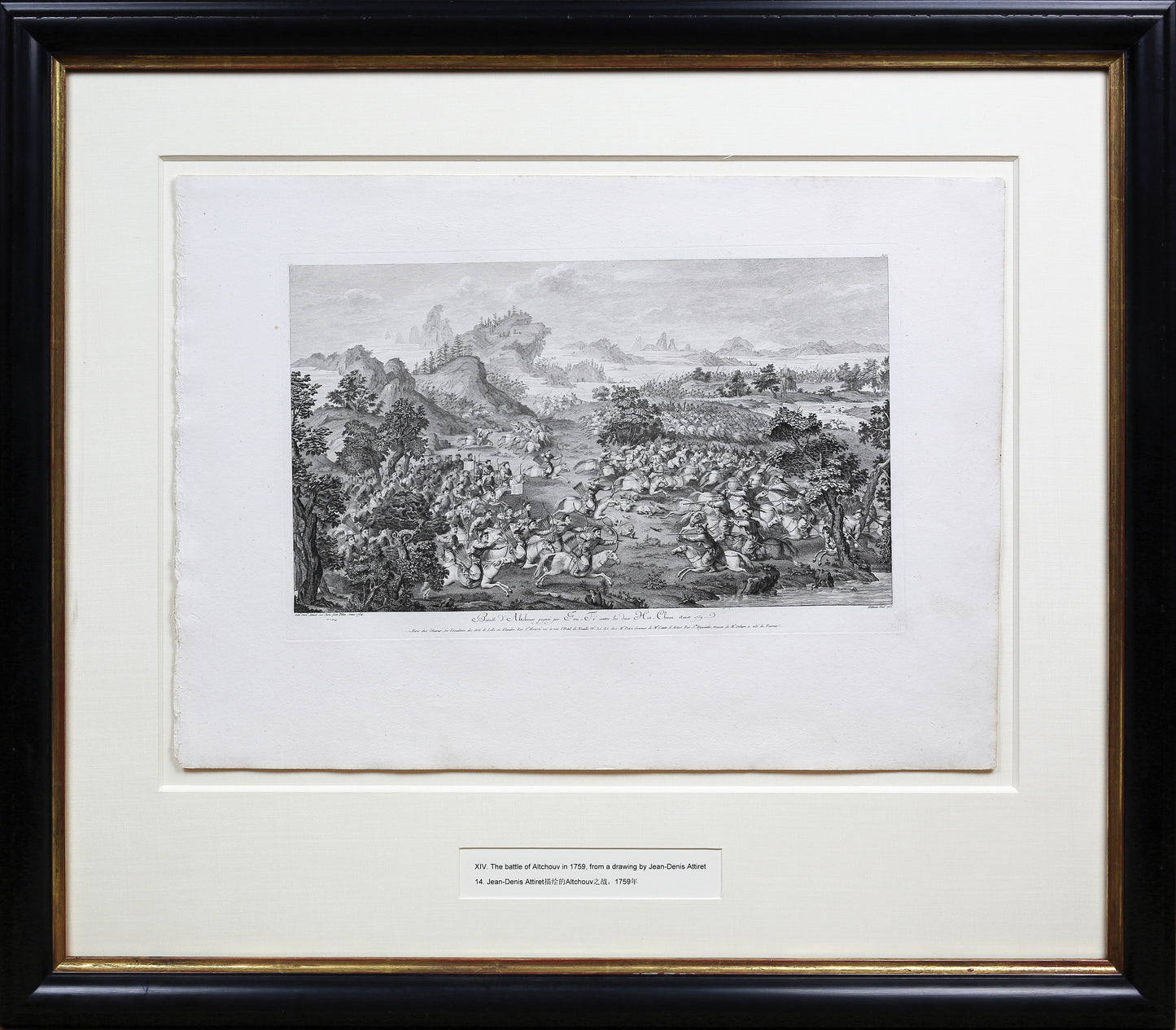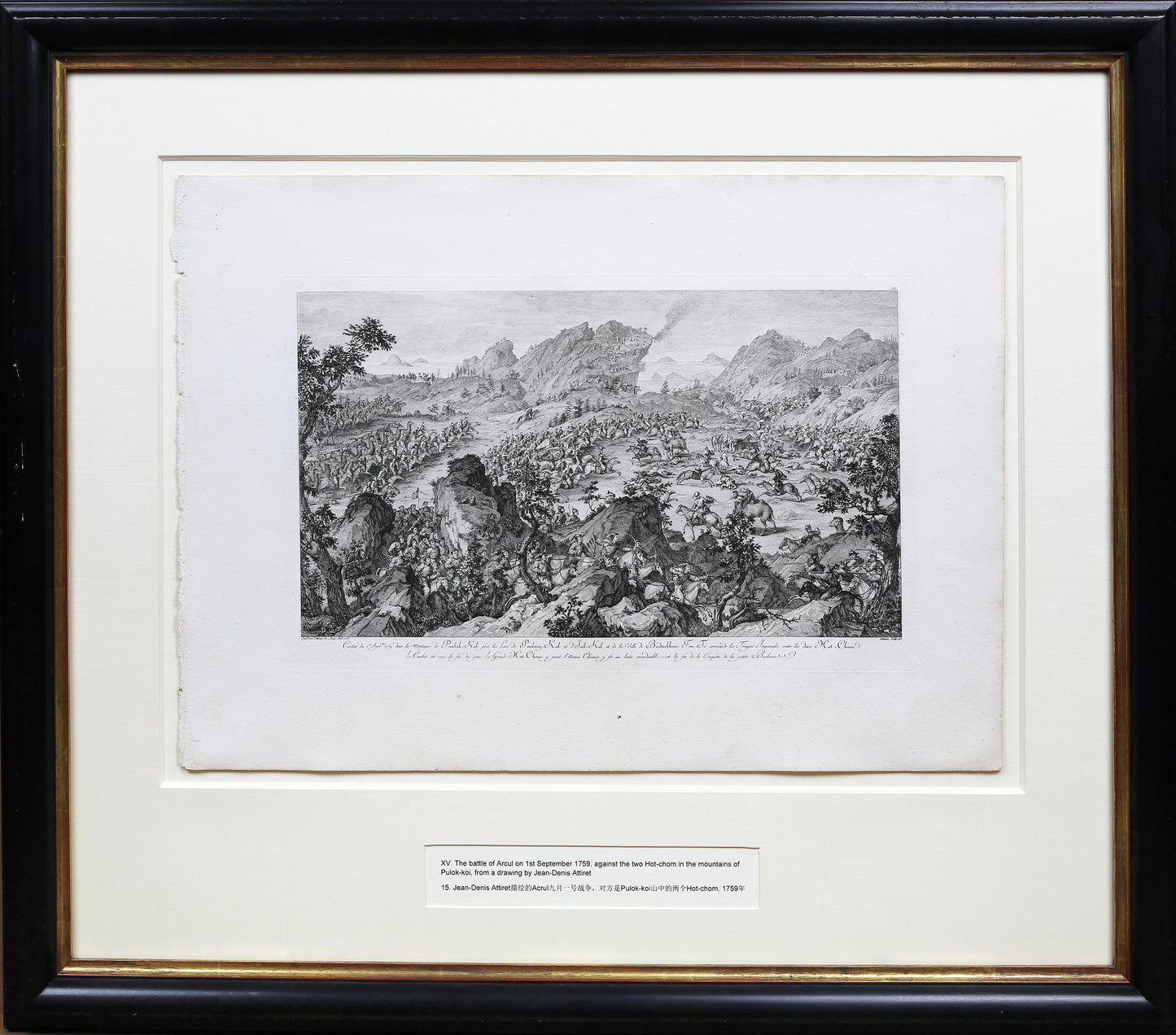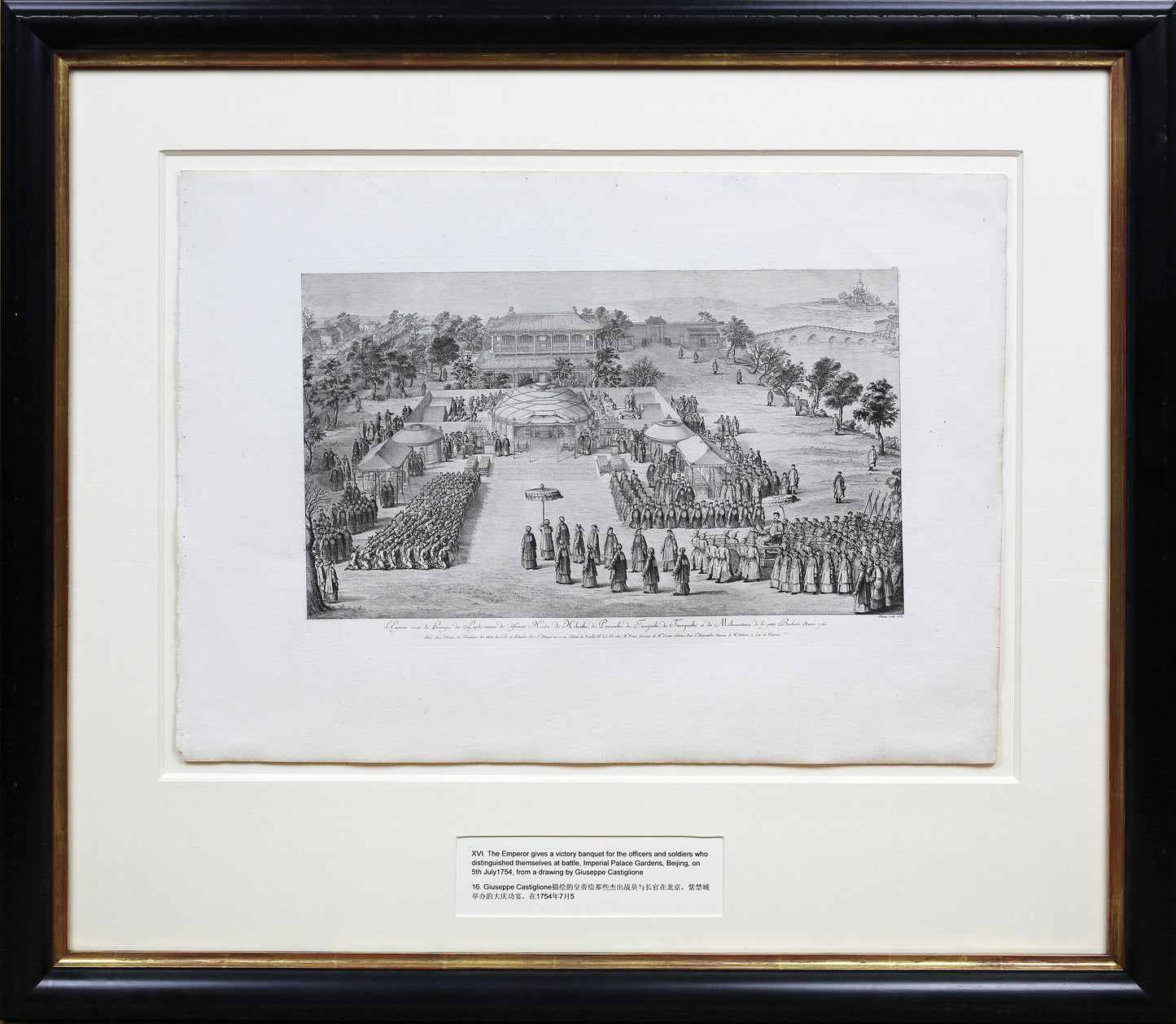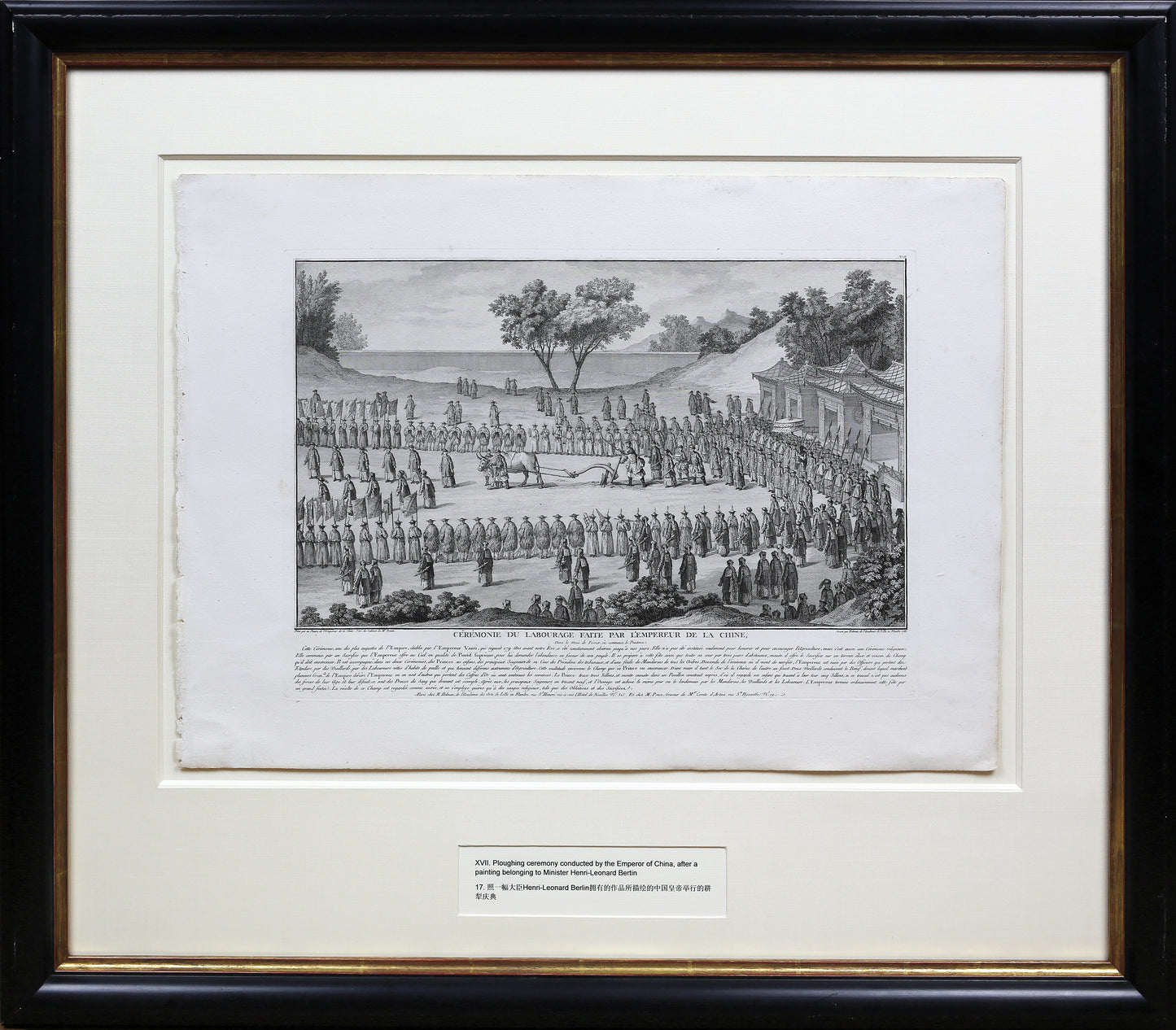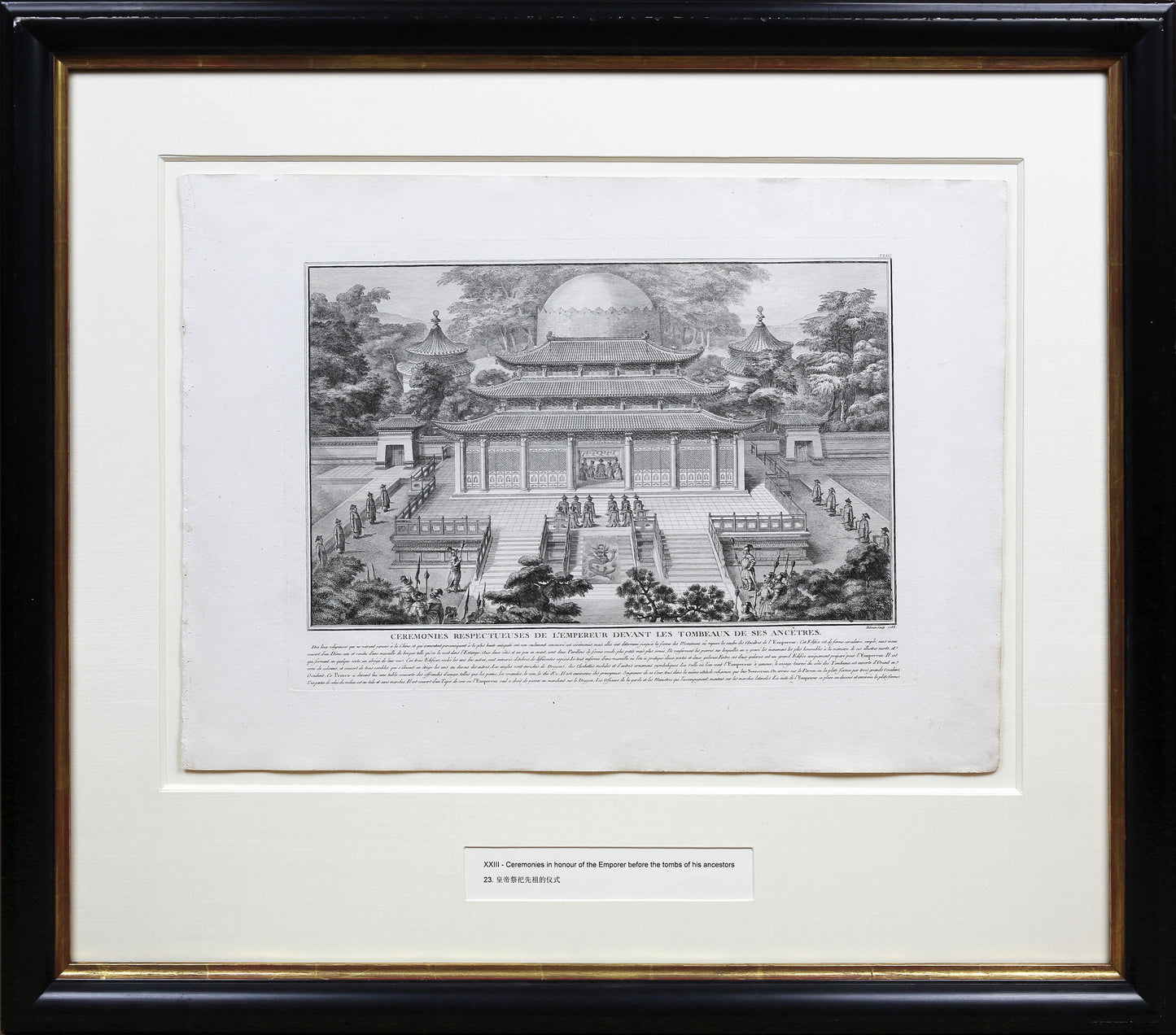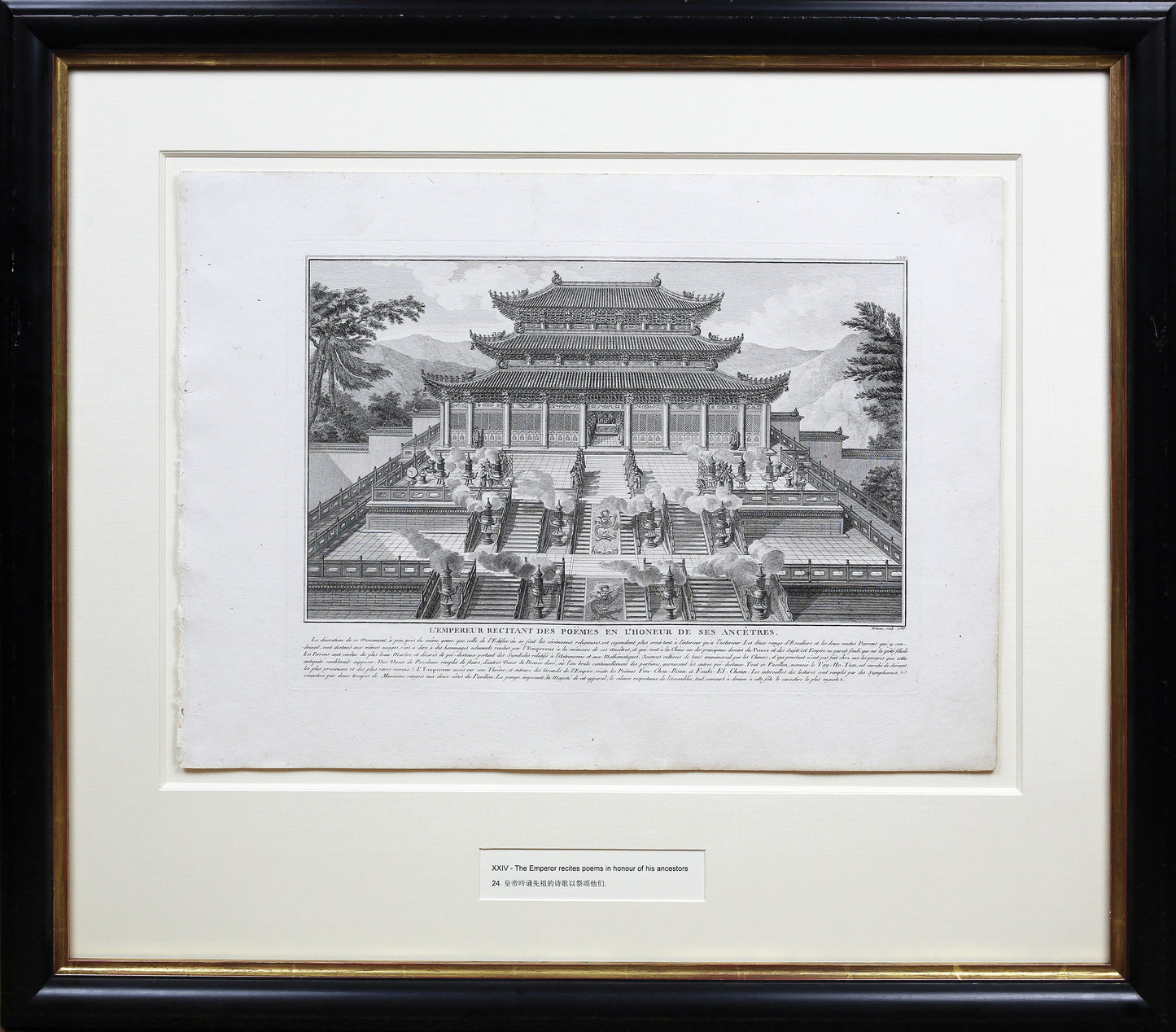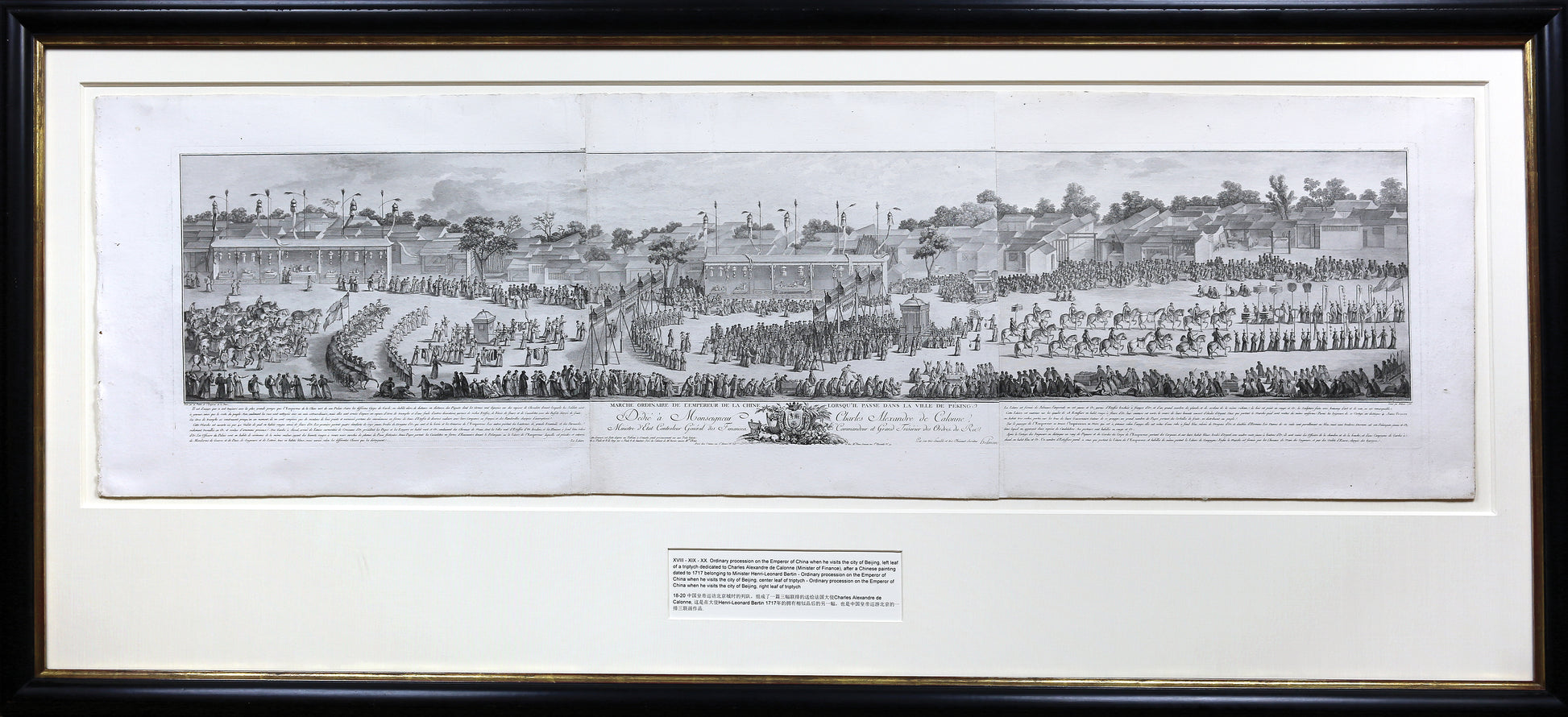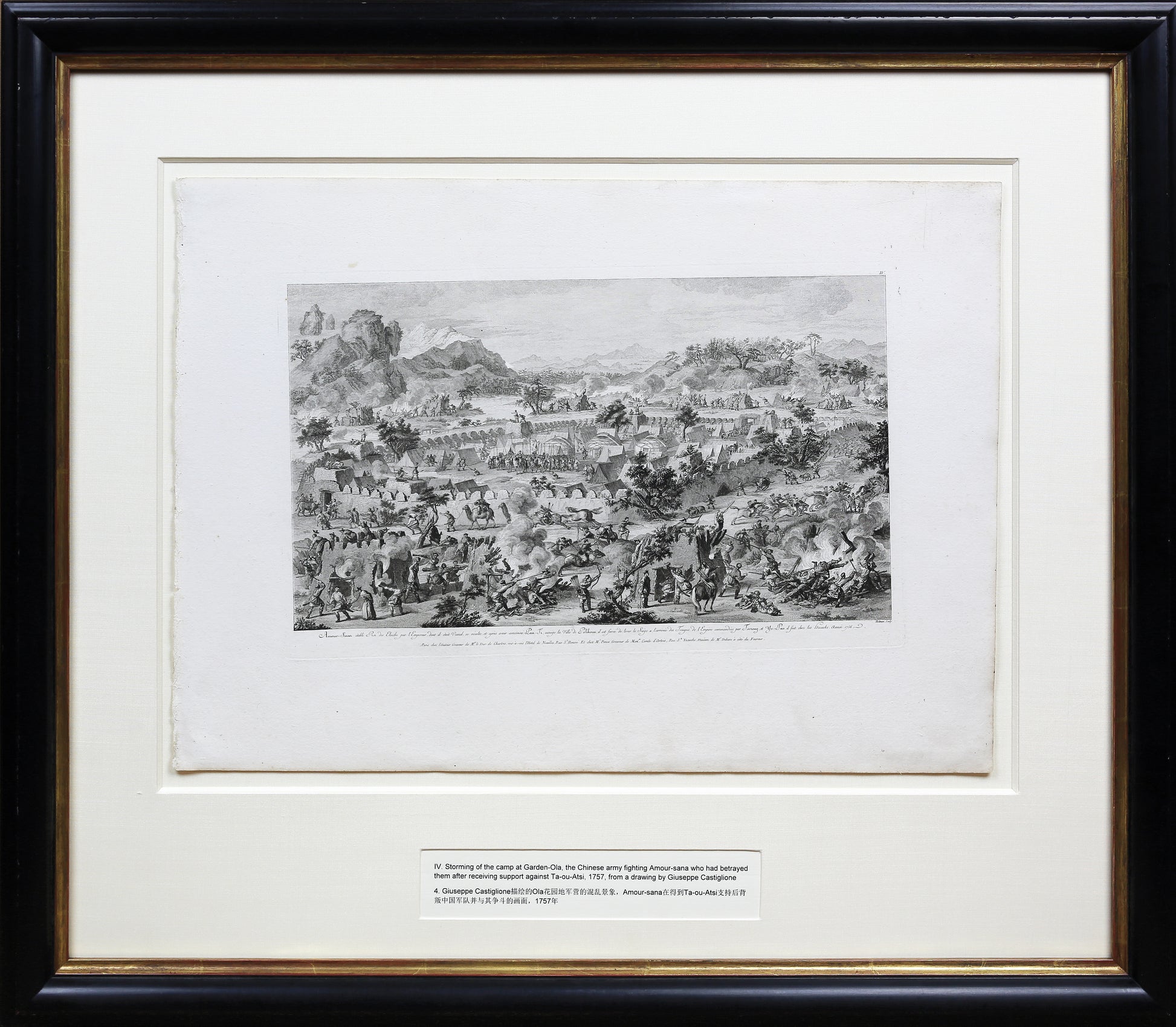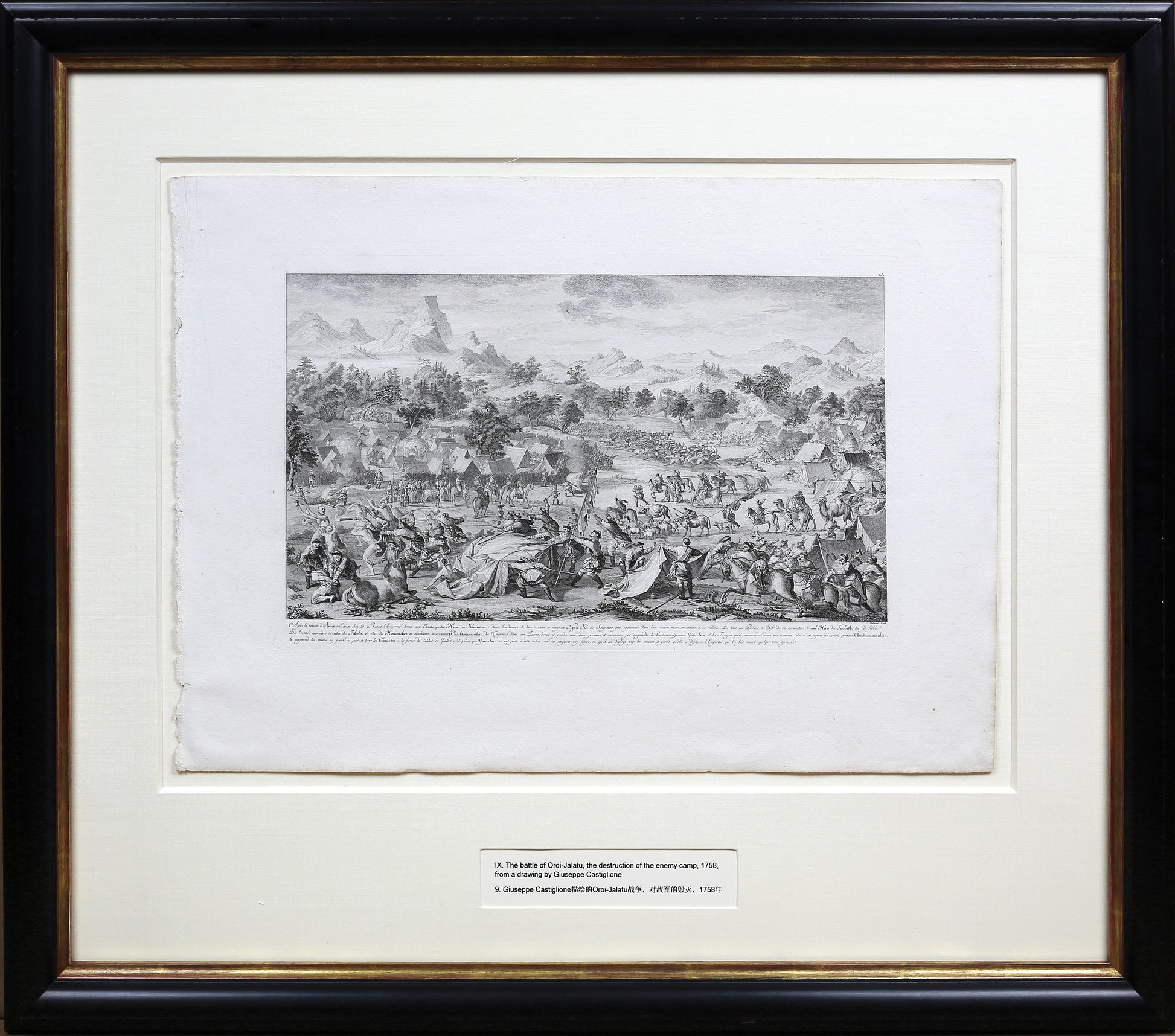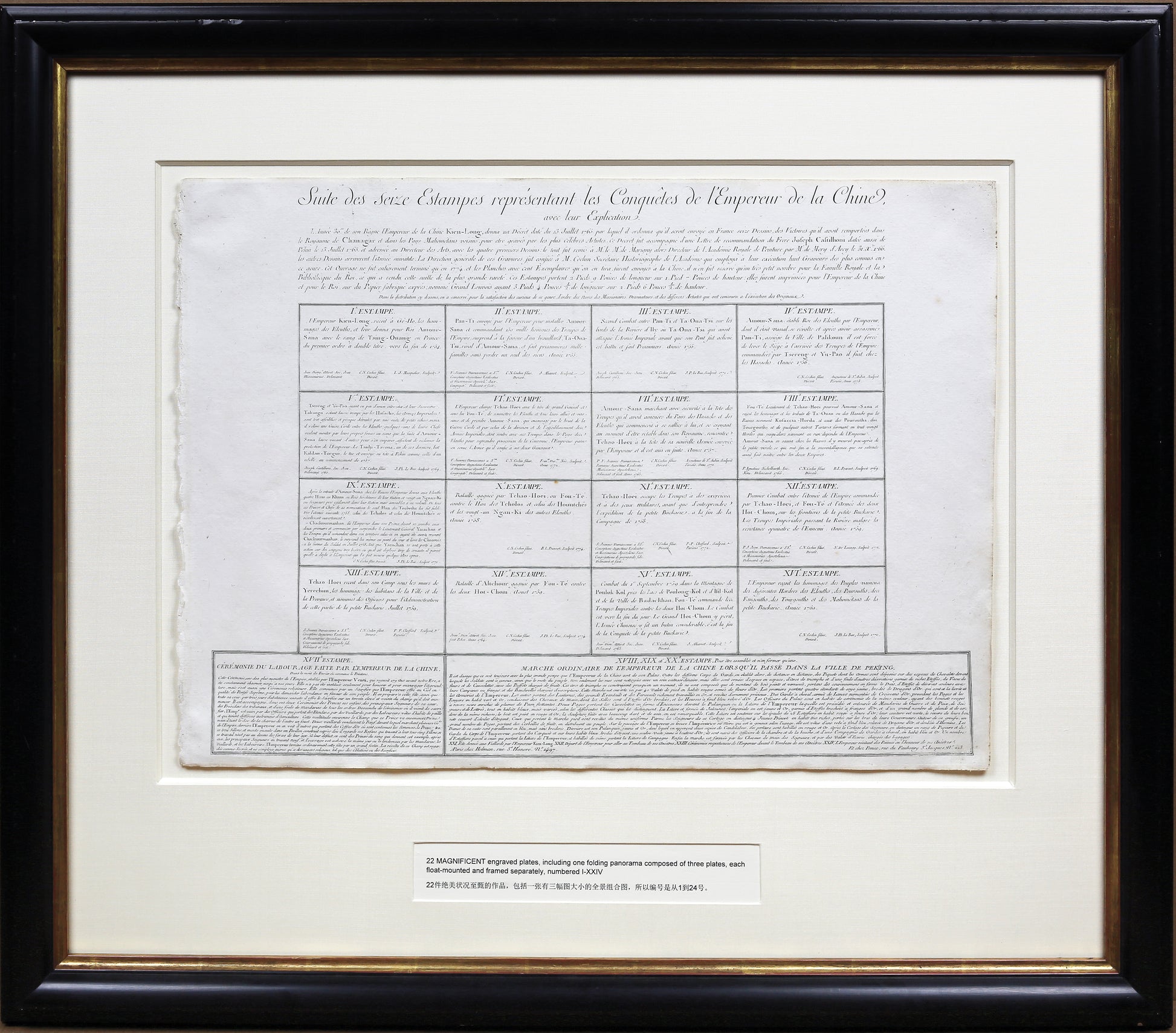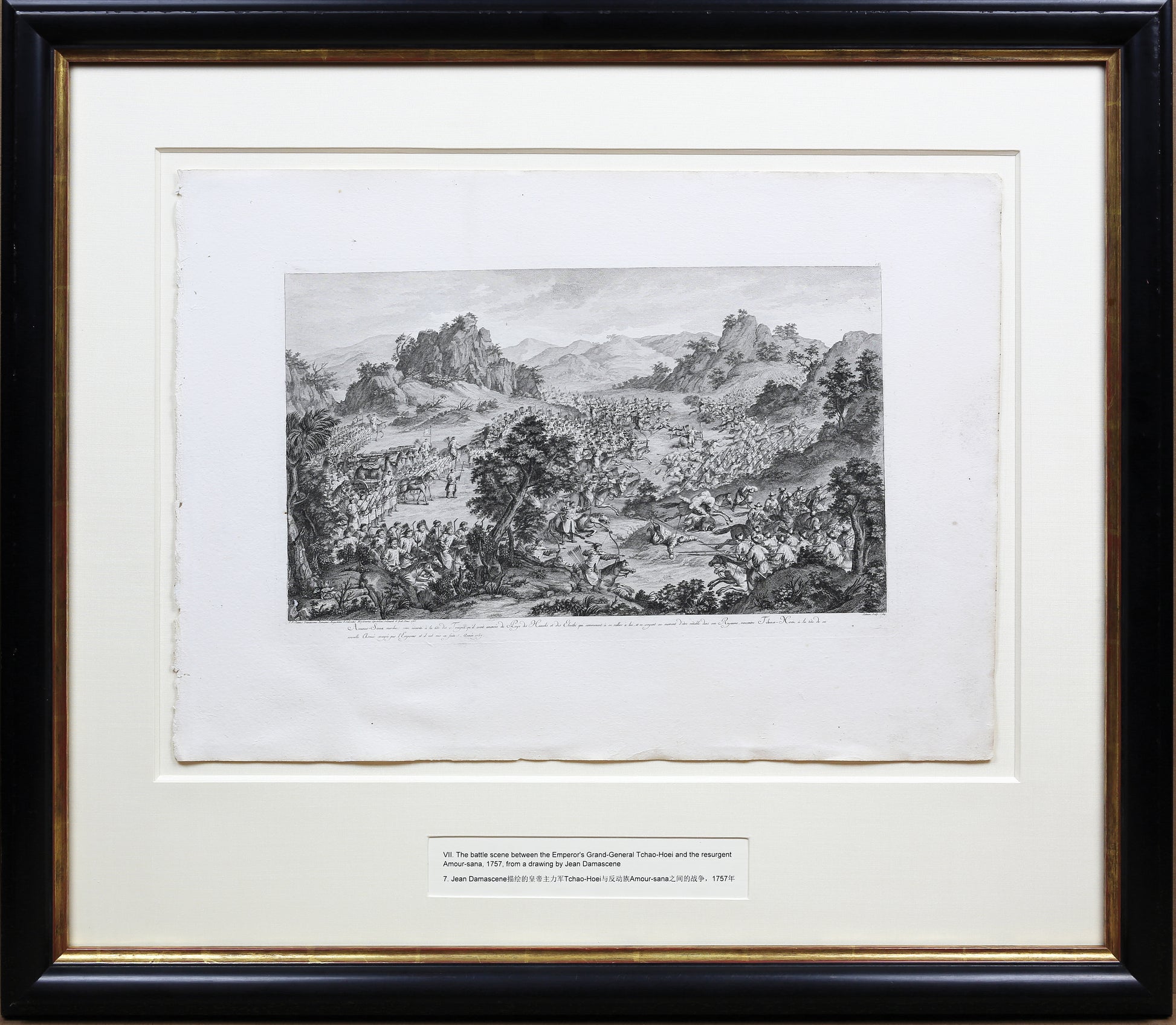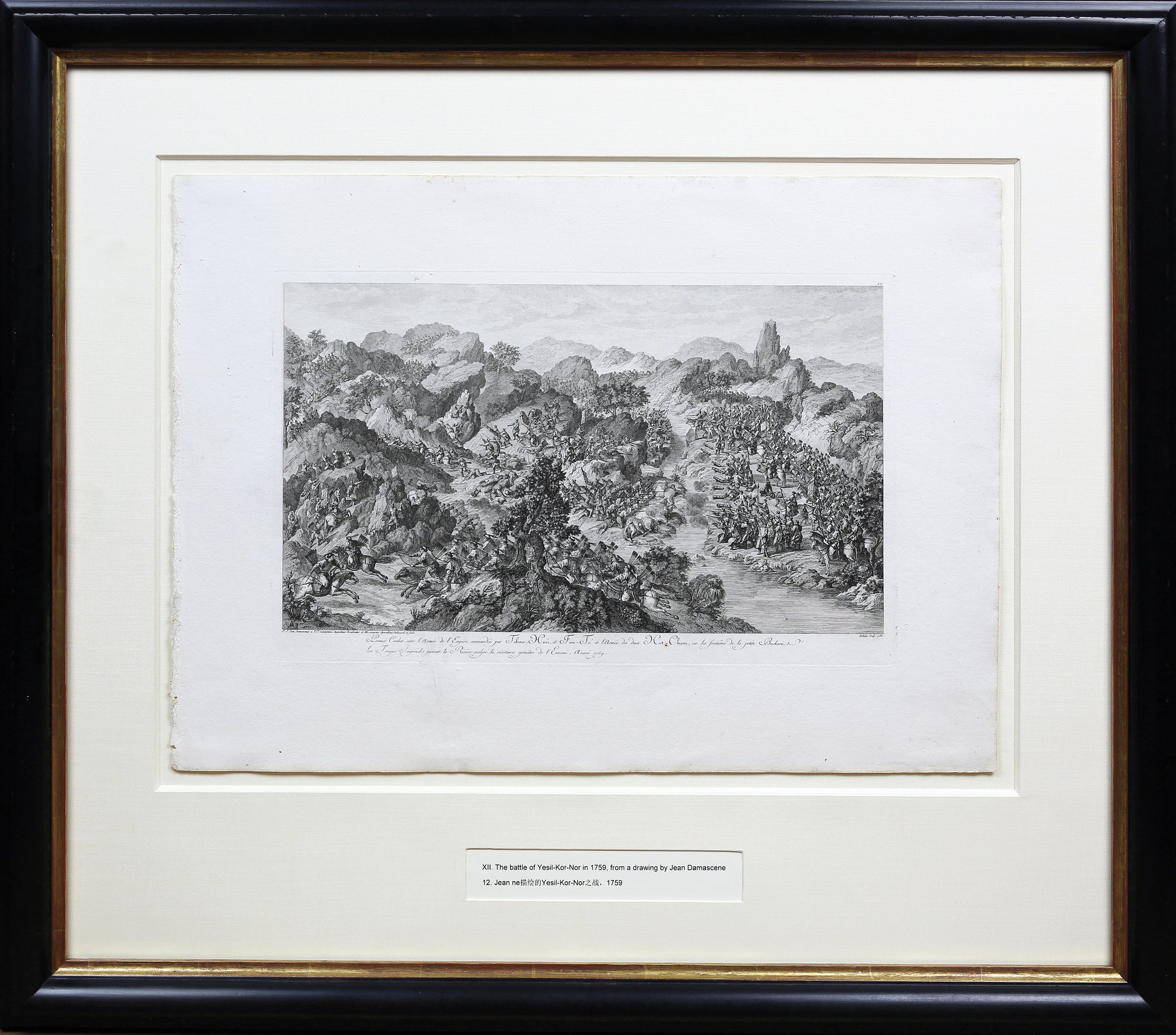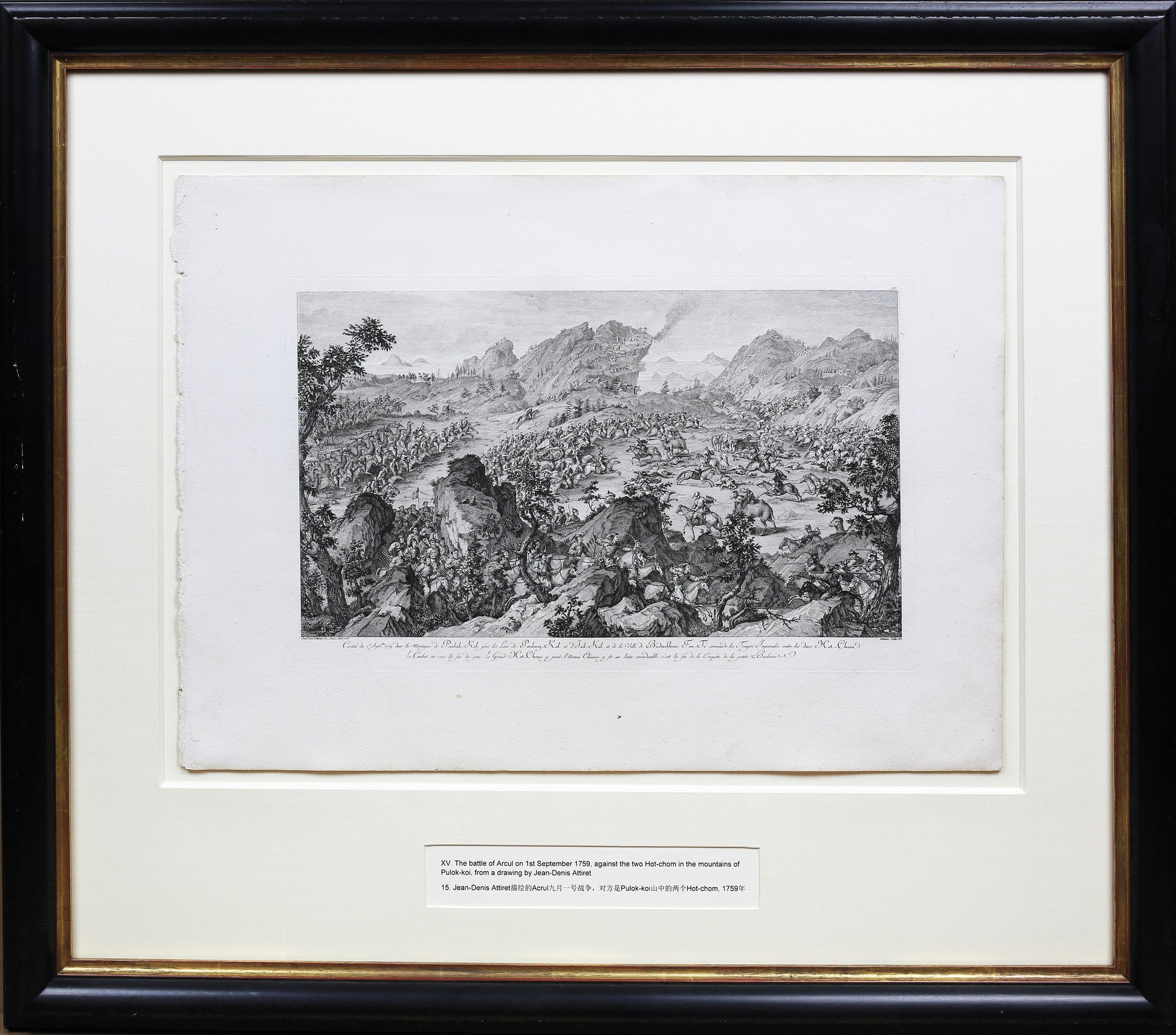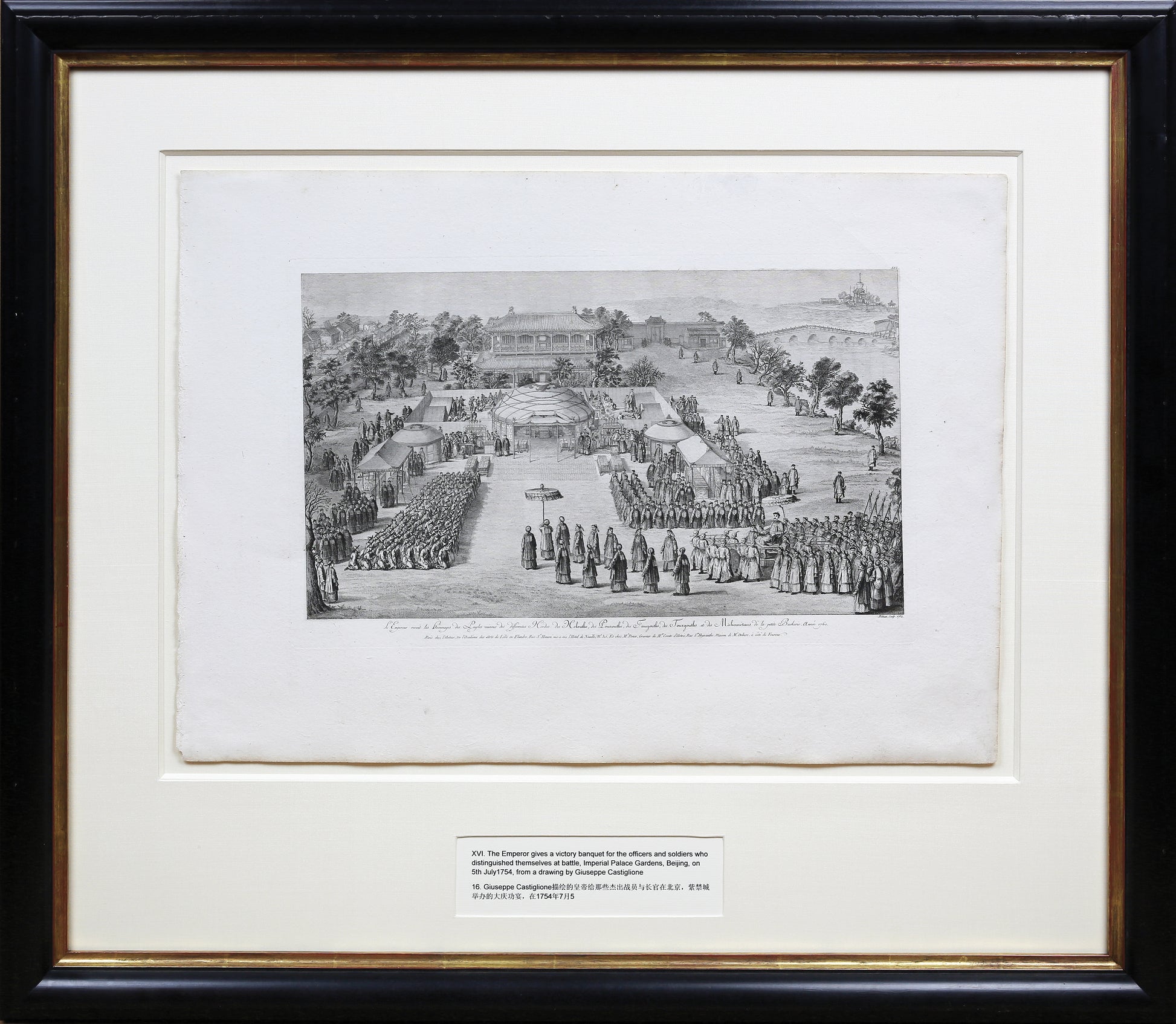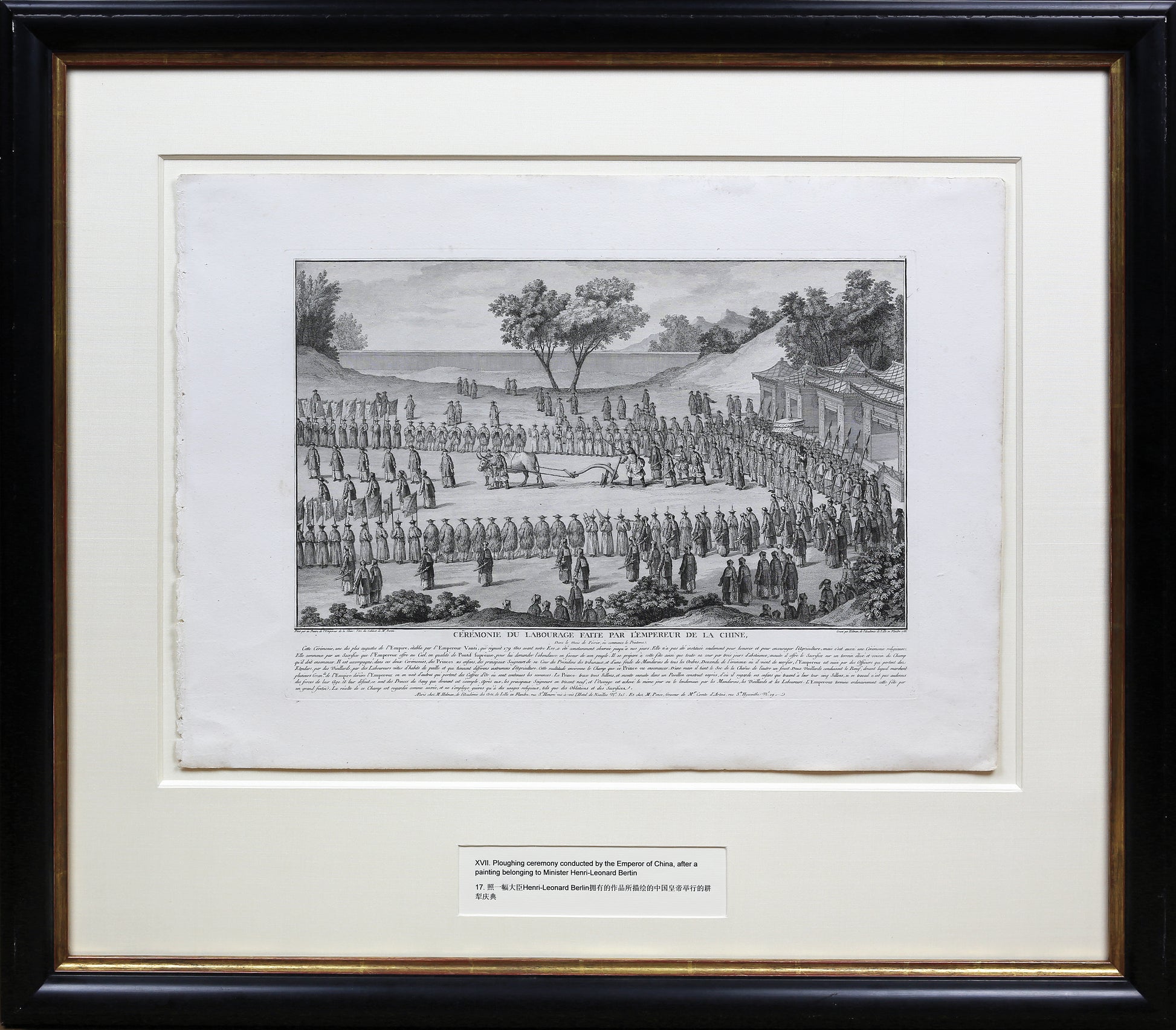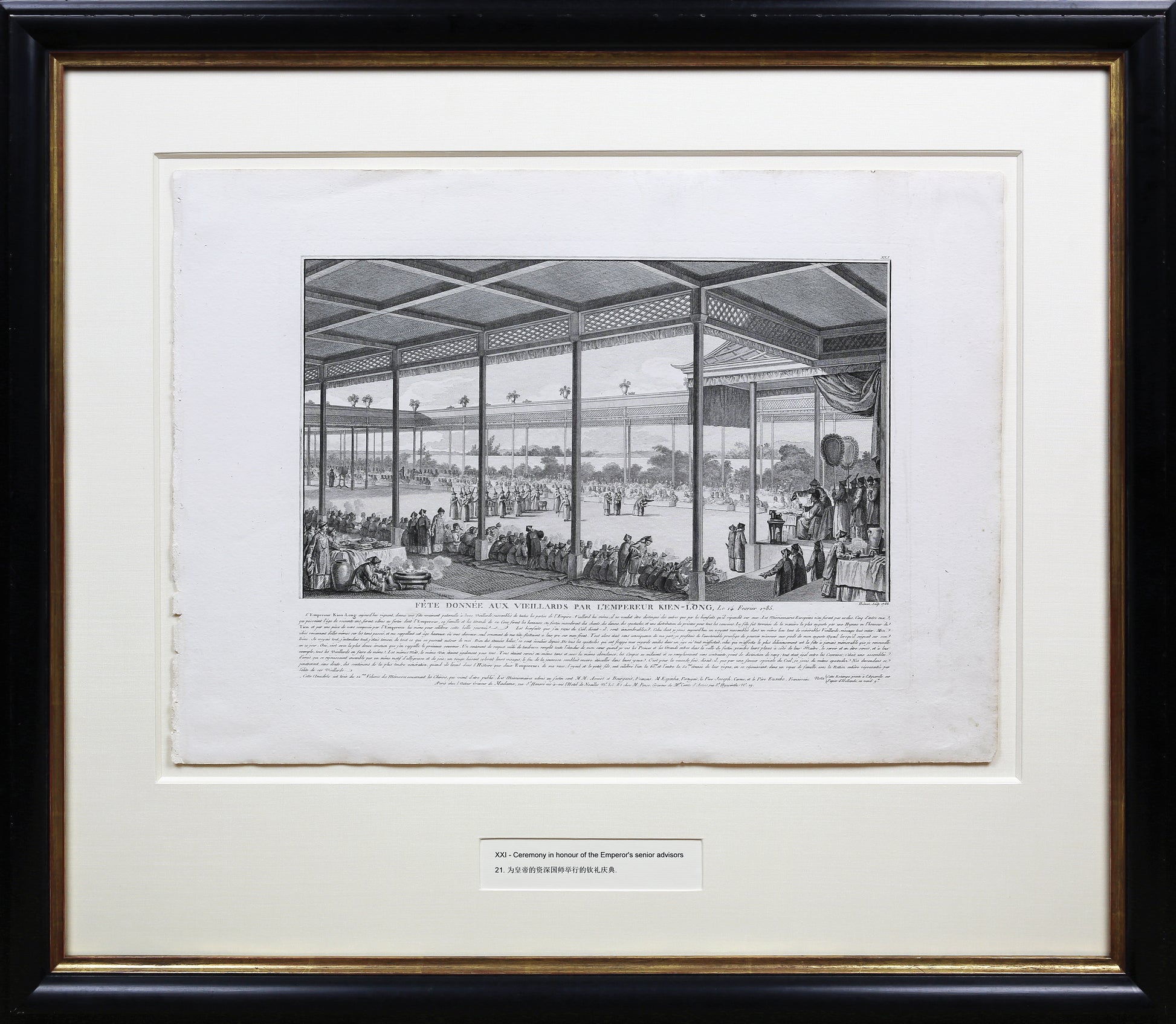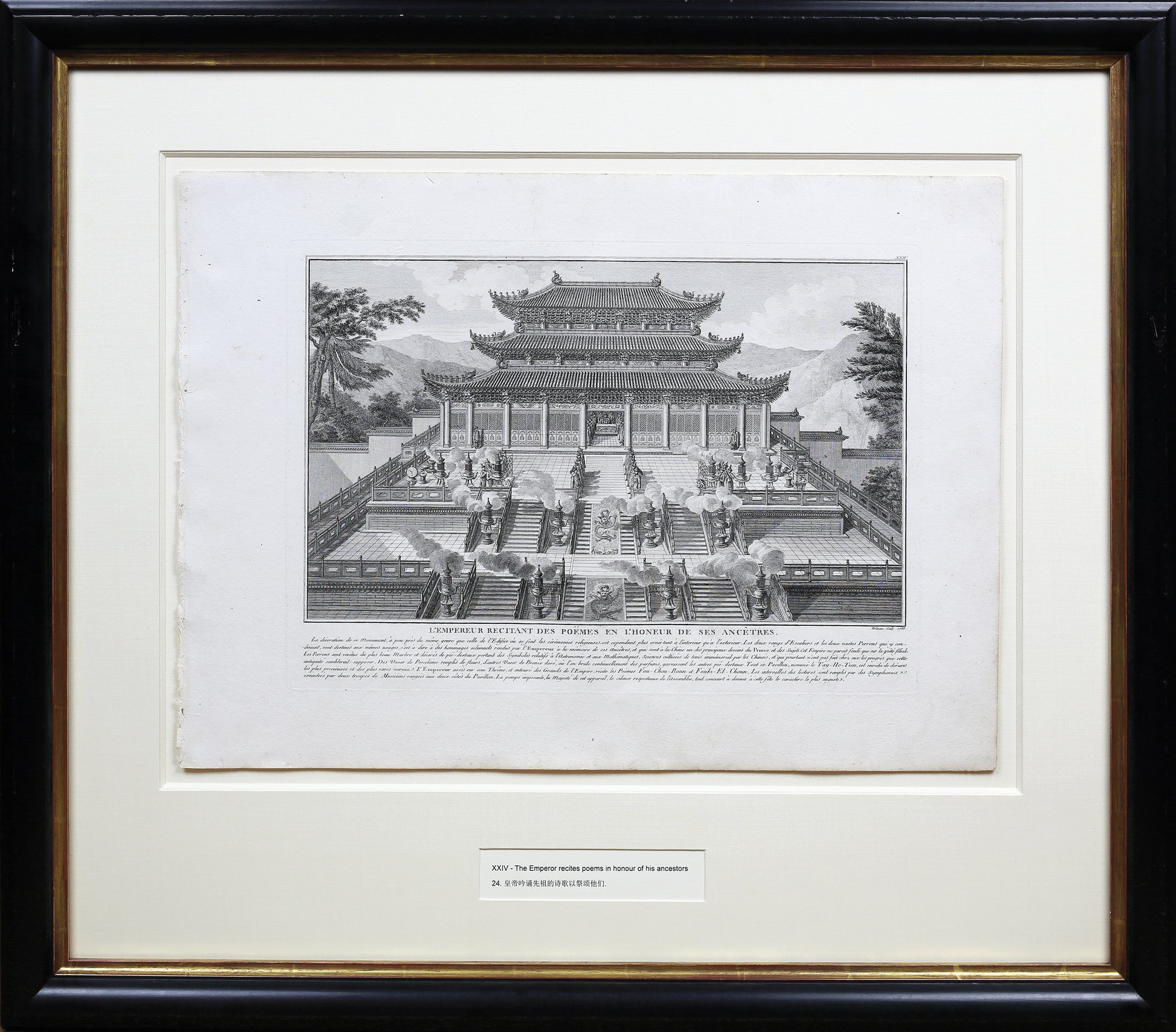from: Views & Explorations
QIANLONG, Emperor of China and HELMAN, Isidore Stanislas (1743-1806?). Conquests of Emperor Qianlong. Paris: 1783-1788.
QIANLONG, Emperor of China and HELMAN, Isidore Stanislas (1743-1806?). Conquests of Emperor Qianlong. Paris: 1783-1788.
Couldn't load pickup availability
QIANLONG, Emperor of China - HELMAN, Isidore Stanislas (1743-1806?)
Suite des seize estampes representant les Conquetes de l’empereur de la Chine, avec leur explication. [Set of 16 prints representing the Conquests of the Emperor of China]
Paris: chez l’Auteur, [1783-1788].
The series depicts the battles, victories and ceremonies of the Chinese Emperor Qianlong, emperor of the Qing dynasty (1644-1911), who ruled from 1735 to 1796. Second and enlarged edition, first French issue, preceded by a Chinese issue with only sixteen engravings, printed in France.
This later series depicts the battles, victories and ceremonies of the Chinese Emperor Qianlong, emperor of the Qing dynasty (1644-1911), who ruled from 1735 to 1796. The original set of sixteen engravings depict his 1772-1776 military campaign, led by General A-Kuei, against the Jinchuan tribes in China’s inner provinces and along the country’s frontiers in the ethnically-Tibetan mountain regions of Szechuan, and were commissioned on the 13th of July 1765. The templates for the first series of engravings were large paintings by European missionary artists employed at that time at the court in Beijing: Italian Jesuit Giuseppe Castiglione (1688-1766), French Jesuit Jean-Denis Attiret (1702-1768), Bohemian Jesuit Ignatius Sichelbarth (1708-1780), and the Italian Augustinian missionary, Jean-Damascene Sallusti (d. 1781), after originals by Chun-ko-erh Hui-pu teng chu te sheng tu (1769-1774). The paintings were sent to France where the engravings for the first series of sixteen were executed in Paris, in the style of the Augsburg copper engraver Georg Philipp Rugendas the Elder (1666-1742), under the direction of Charles-Nicolas Cochin of the Academie Royale at the court of Louis XVI. These engravings were printed in 1774 and distributed in China, with only a few rare proofs remaining in Europe.
Such was the French interest in Qianlong so great that Helman (a pupil of J.P. le Bas who had worked on the first series of plates) published reduced versions, as here, with captions in French, between 1783 and 1785. He added eight further plates depicting imperial ceremonies between 1786 and 1788, with an additional leaf of engraved labels for prints 1-18. Qianlong’s ‘Battle Copper Prints’ were just one of the means the Manchu emperor employed to document his campaigns of military expansion and suppression of regional unrest. They served to glorify his rule and to exert ideological control over Chinese historiography. In the history of Chinese art, copper-print engraving remained an episode. Seen in their political context, the Qianlong prints represent a distinct and exceptional pictorial genre and are telling examples of the self-dramatization of imperial state power. Later campaigns of Qianlong which were similarly commemorated include Taiwan (1786-1788), Annam or Vietnam (1788), Gurkhas invasion of Tiber (1790), and Yunnan, Guizhou and Hunan (1795-1796).
Cordier 642; Lust 1131; Shiqu Baoji, Imperial Catalogue; Chuang Chi-fa, Taipei Palace Museum - Ten Military Campaigns ofQianlong Emperor; W. Fuchs, in Monumenta Serica, 4 (1939-40), 122; Paul Pelliot, ‘Les ‘Conquetes de l’Empereur de la Chine’’, in Toung pao, 20 (1921), pp. 183-274; S. L. Shaw, Imperial printing, p. 22; Takata Tokio, ‘QianlongEmperor’s Copperplate Engravings of the ‘Conquest of Western Regions,’ The Memoirs of the Tokyo Bunko, 70, 2012.
